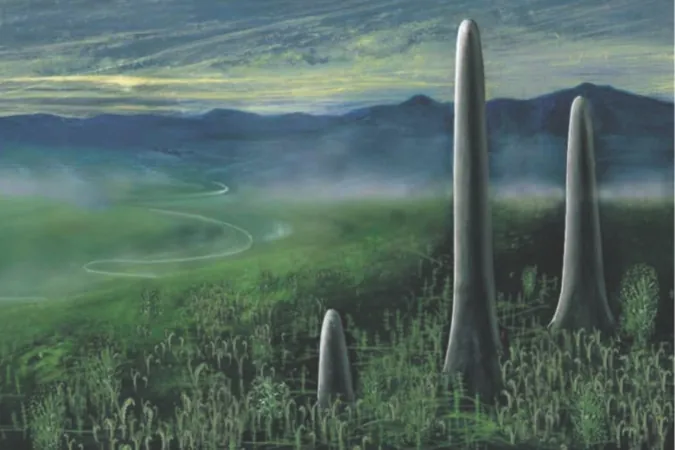
Unveiling the Mystery: Ancient Prototaxites Challenge Everything We Know About Life
2025-03-28
Author: Amelia
Introduction
In a fascinating turn of paleobiology, researchers have shed new light on the enigmatic Prototaxites, colossal life forms that thrived on Earth hundreds of millions of years ago. These ancient giants, some towering as high as 26 feet (8 meters), are believed to have been the planet's first large organisms to make their mark on dry land, resembling massive tree trunks with intricate networks of tiny tubes. For over 150 years, Prototaxites have baffled scientists, as their classification has eluded a definitive spot in the known tree of life.
Recent Research
Recently, new research conducted by a team from the University of Edinburgh has put forth a groundbreaking theory: Prototaxites likely belonged to a previously unknown lineage of multicellular eukaryotes—organisms with nucleated cells, which include all animals and plants. Their findings, shared in a preprint study on bioRxiv, have yet to undergo peer review, but they have already sparked thrilling discussions among scientists.
New Findings
Lead researcher Corentin Loron and his team employed a comprehensive re-evaluation of a particular Prototaxites species, dubbed Prototaxites taiti, dismissing the long-held assumption that categorized them as ancient fungi. This assumption was primarily based on a 2007 study, but Loron’s team has presented compelling evidence to the contrary.
By meticulously comparing the anatomy and molecular composition of Prototaxites with ancient fungi preserved in the Rhynie chert—a significant Early Devonian sedimentary formation in Scotland—the researchers uncovered crucial distinctions. They determined that Prototaxites taiti stood out as the largest organism in the Rhynie ecosystem and exhibited anatomical features that set it apart from both current and ancient fungal species. Notably, they found no traces of chitin or chitosan, key characteristics of the fungal cell wall, in Prototaxites specimens.
Defining Features
The study documented three defining features of these giants: their vast structures formed by diverse tube-like components, compounds akin to lignin (a substance giving rigidity to plants), and a heterotrophic lifestyle that involved consuming other organisms for sustenance.
Implications of the Research
The implications of this research are profound. “Based on our investigation, we are unable to link Prototaxites to any existing lineage, further emphasizing its uniqueness,” the team concluded. Their findings hint at the possibility of a completely new kingdom of life emerging from history, a notion that could reshape our understanding of evolutionary biology.
Traditionally, all living organisms on Earth are classified into one of three domains: Bacteria, Archaea, or Eukaryotes. Eukaryotes are further divided into four kingdoms: animals, plants, fungi, and protists. The evidence suggesting Prototaxites' divergence from established lineages could indicate that Earth once hosted additional kingdoms of life that have since vanished.
Conclusion
As scientists continue to uncover the secrets of our planet's prehistoric life, the potential for discovering entirely new realms of biological existence reignites a sense of wonder. Could there be more forgotten kingdoms lurking in the annals of time, waiting to be unearthed? The answers might just be hidden in the ancient fossils lying beneath our feet.









 Brasil (PT)
Brasil (PT)
 Canada (EN)
Canada (EN)
 Chile (ES)
Chile (ES)
 Česko (CS)
Česko (CS)
 대한민국 (KO)
대한민국 (KO)
 España (ES)
España (ES)
 France (FR)
France (FR)
 Hong Kong (EN)
Hong Kong (EN)
 Italia (IT)
Italia (IT)
 日本 (JA)
日本 (JA)
 Magyarország (HU)
Magyarország (HU)
 Norge (NO)
Norge (NO)
 Polska (PL)
Polska (PL)
 Schweiz (DE)
Schweiz (DE)
 Singapore (EN)
Singapore (EN)
 Sverige (SV)
Sverige (SV)
 Suomi (FI)
Suomi (FI)
 Türkiye (TR)
Türkiye (TR)
 الإمارات العربية المتحدة (AR)
الإمارات العربية المتحدة (AR)